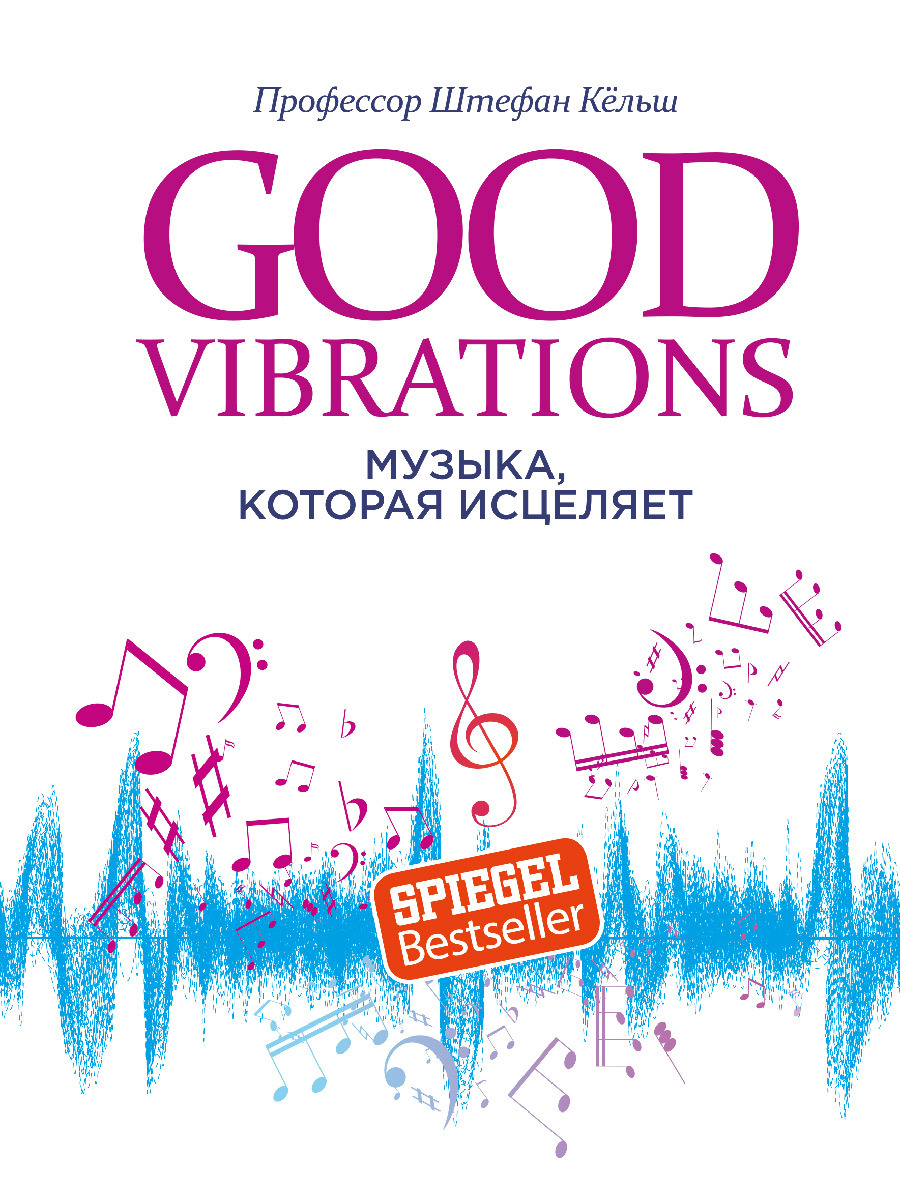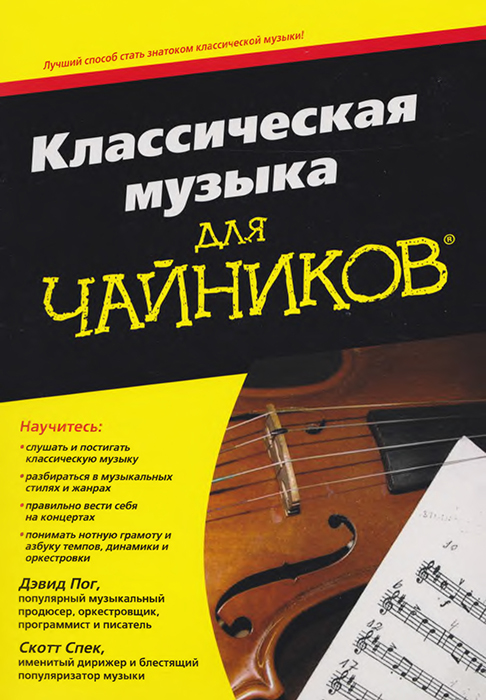Читать книгу - "Good Vibrations. Музыка, которая исцеляет - Штефан Кёльш"
Аннотация к книге "Good Vibrations. Музыка, которая исцеляет - Штефан Кёльш", которую можно читать онлайн бесплатно без регистрации
Эта книга рассказывает о влиянии музыки на физическое и ментальное здоровье человека. Профессор Кёльш утверждает, что музыка лежит в основе человеческой сущности и что музыкальность присуща каждому человеку. Опираясь на новейшие научные исследования, автор рассказывает о влиянии музыки на гормональную, иммунную, вегетативную нервную систему; о том, что происходит в мозге при прослушивании музыки; о влиянии музыки на состояние здоровья и о ее способности лечить болезни и бороться с зависимостями. Вы найдете здесь много практических советов, упражнений и даже списки для прослушивания. Не обязательно читать всю книгу целиком. Вы можете прочесть только нужный вам раздел или знакомиться с частями в любой последовательности. Для всех, кто любит музыку и желает укрепить здоровье.
Thaut, M. H., McIntosh, G. C., Rice, R. R., Miller, R. A., Rathbun, J., & Brault, J. M. (1996): Rhythmic auditory stimulation in gait training for Parkinson’s disease patients, Movement Disorders: Official Journal of the Movement Disorder Society, 11 (2), S. 193–200.
193
Spaulding, S. J., Barber, B., Colby, M., Cormack, B., Mick, T., & Jenkins, M. E. (2013): Cueing and gait improvement among people with Parkinson’s disease: a meta-analysis, Archives of Physical Medicine and Rehabilitation, 94 (3), S. 562–570.
194
Ghai, S., Ghai, I., Schmitz, G., & Effenberg, A. O. (2018): Effect of rhythmic auditory cueing on parkinsonian gait: A systematic review and meta-analysis, Scientific Reports, 8 (1), S. 506.
195
Allman, M. J., & Meck, W. H. (2011): Pathophysiological distortions in time perception and timed performance, Brain, 135 (3), S. 656–677.
196
Grahn, J. A., & Brett, M. (2007): Rhythm and beat perception in motor areas of the brain, Journal of Cognitive Neuroscience, 19 (5), S. 893–906.
197
Benoit, C. E., Dalla Bella, S., Farrugia, N., Obrig, H., Mainka, S., & Kotz, S. A. (2014): Musically cued gait-training improves both perceptual and motor timing in Parkinson’s disease, Frontiers in Human Neuroscience, 8, S. 494.
198
Ueda, T., Suzukamo, Y., Sato, M., & Izumi, S. I. (2013): Effects of music therapy on behavioral and psychological symptoms of dementia: a systematic review and meta-analysis, Ageing Research Reviews, 12 (2), S. 628–641.
199
Hackney, M. E., & Earhart, G. M. (2009): Effects of dance on movement control in Parkinson’s disease: a comparison of Argentine tango and American ballroom, Journal of Rehabilitation Medicine, 41 (6), S. 475–481.
200
Sihvonen, A. J., Särkämö, T., Leo, V., Tervaniemi, M., Altenmüller, E., & Soinila, S. (2017): Music-based interventions in neurological rehabilitation, The Lancet Neurology, 16 (8), S. 648–660.
201
Pohl, P., Dizdar, N., & Hallert, E. (2013): The Ronnie Gardiner Rhythm and Music Method — a feasibility study in Parkinson’s disease, Disability and Rehabilitation, 35 (26), S. 2197–2204; Pacchetti, C., Mancini, F., Aglieri, R., Fundarò, C., Martignoni, E., & Nappi, G. (2000): Active music therapy in Parkinson’s disease: an integrative method for motor and emotional rehabilitation, Psychosomatic Medicine, 62 (3), S. 386–393.
202
Rehfeld, K., Müller, P., Aye, N., Schmicker, M., Dordevic, M., Kaufmann, J., ... & Müller, N. G. (2017): Dancing or fitness sport? The effects of two training programs on hippocampal plasticity and balance abilities in healthy seniors, Frontiers in Human Neuroscience, 11, S. 305.
203
Ockelford, A. (2017): Towards a developmental model of musical empathy using insights from children who are on the autism spectrum or who have learning difficulties, Music and Empathy, hg. v. Kind, E., Waddington, C., Rontledge. S. 39–88.
204
Heaton, P. (2009): Assessing musical skills in autistic children who are not savants, Philosophical Transactions of the Royal Society of London B: Biological Sciences, 364 (1522), S. 1443–1447; De-Pape, A. M. R., Hall, G. B., Tillmann, B., & Trainor, L. J. (2012): Auditory processing in high-functioning adolescents with autism spectrum disorder, PLoS One, 7 (9), e44084.
205
Lai, G., Pantazatos, S. P., Schneider, H., & Hirsch, J. (2012): Neural systems for speech and song in autism, Brain, 135 (3), S. 961–975.
206
DePriest, J., Glushko, A., Steinhauer, K., & Koelsch, S. (2017): Language and music phrase boundary processing in Autism Spectrum Disorder: An ERP study, Scientific Reports, 7 (1), S. 14465.
207
Wan, C. Y., Bazen, L., Baars, R., Libenson, A., Zipse, L., Zuk, J., … & Schlaug, G. (2011): Auditory-motor mapping training as an intervention to facilitate speech output in non-verbal children with autism: a proof of concept study, PLoS One, 6 (9), e25505.
208
Chenausky, K., Norton, A., Tager-Flusberg, H., & Schlaug, G.(2016): Auditory-motor mapping training: comparing the effects of a novel speech treatment to a control treatment for minimally verbal children with autism, PLoS One, 11 (11), e0164930.
209
Quintin, E. M., Bhatara, A., Poissant, H., Fombonne, E., & Levitin, D. J. (2011): Emotion perception in music in high-functioning adolescents with autism spectrum disorders, Journal of Autism and Developmental Disorders, 41 (9), S. 1240–1255; Allen, R., Davis, R., & Hill, E. (2013): The effects of autism and alexithymia on physiological and verbal responsiveness to music, Journal of Autism and Developmental Disorders, 43 (2), S. 432–444.
210
Allen, R., Hill, E., & Heaton, P. (2009): Hath charms to soothe …An exploratory study of how high-functioning adults with ASD experience music, Autism, 13 (1), S. 21–41.
211
Caria, A., Venuti, P., & de Falco, S. (2011): Functional and dysfunctional brain circuits underlying emotional processing of music in autism spectrum disorders, Cerebral Cortex, 21 (12), S. 2838–2849.
212
Kim, J., Wigram, T., & Gold, C. (2009): Emotional, motivational and interpersonal responsiveness of children with autism in improvisational music therapy, Autism, 13 (4), S. 389–409.
213
Geretsegger, M., Elefant, C., Mössler, K. A., & Gold, C. (2014): Music therapy for people with autism spectrum disorder, Cochrane Database of Systematic Reviews, 6 (6), S. 1–64.
214
Koenig, J., Oelkers-Ax, R., Kaess, M., Parzer, P., Lenzen, C., Hillecke, T. K., & Resch, F. (2013): Specific music therapy techniques in the treatment of primary headache disorders in adolescents: a randomized attention-placebo- controlled trial, The Journal of Pain, 14 (10), S. 1196–1207.
215
Drogen- und Suchtbericht der Bundesregierung 2017 (www.bundesregierung.de/breg-de/service/publikationen/drogen-und-suchtbericht- 2017-730846).
216
Ahmed, S. H., Guillem, K., & Vandaele, Y. (2013): Sugar addiction: pushing the drug-sugar analogy to the limit, Current Opinion in Clinical Nutrition & Metabolic Care, 16 (4), S. 434–439.
217
Flegal, K. M., Kit, B. K., Orpana, H., & Graubard, B. I. (2013): Association of all-cause mortality with overweight and obesity using standard body mass index categories: a systematic review and meta-analysis, Jama, 309 (1), S. 71–82.
218
Peeters, K.,
Прочитали книгу? Предлагаем вам поделится своим впечатлением! Ваш отзыв будет полезен читателям, которые еще только собираются познакомиться с произведением.
Оставить комментарий
-
 Вера Попова27 октябрь 01:40
Любовь у всех своя-разная,но всегда это слово ассоциируется с радостью,нежностью и счастьем!!! Всем добра!Автору СПАСИБО за добрую историю!
Любовь приходит в сентябре - Ника Крылатая
Вера Попова27 октябрь 01:40
Любовь у всех своя-разная,но всегда это слово ассоциируется с радостью,нежностью и счастьем!!! Всем добра!Автору СПАСИБО за добрую историю!
Любовь приходит в сентябре - Ника Крылатая
-
 Вера Попова10 октябрь 15:04
Захватывает,понравилось, позитивно, рекомендую!Спасибо автору за хорошую историю!
Подарочек - Салма Кальк
Вера Попова10 октябрь 15:04
Захватывает,понравилось, позитивно, рекомендую!Спасибо автору за хорошую историю!
Подарочек - Салма Кальк
-
 Лиза04 октябрь 09:48
Роман просто супер давайте продолжение пожалуйста прочитаю обязательно Плакала я только когда Полина искала собаку Димы барса ♥️ Пожалуйста умаляю давайте еще !))
По осколкам твоего сердца - Анна Джейн
Лиза04 октябрь 09:48
Роман просто супер давайте продолжение пожалуйста прочитаю обязательно Плакала я только когда Полина искала собаку Димы барса ♥️ Пожалуйста умаляю давайте еще !))
По осколкам твоего сердца - Анна Джейн
-
 yokoo18 сентябрь 09:09
это прекрасный дарк роман!^^ очень нравится
#НенавистьЛюбовь. Книга вторая - Анна Джейн
yokoo18 сентябрь 09:09
это прекрасный дарк роман!^^ очень нравится
#НенавистьЛюбовь. Книга вторая - Анна Джейн





